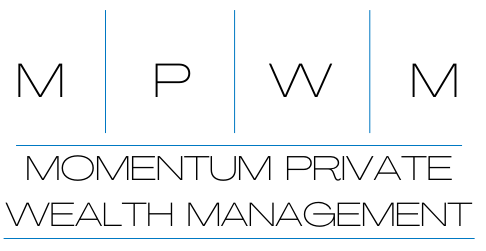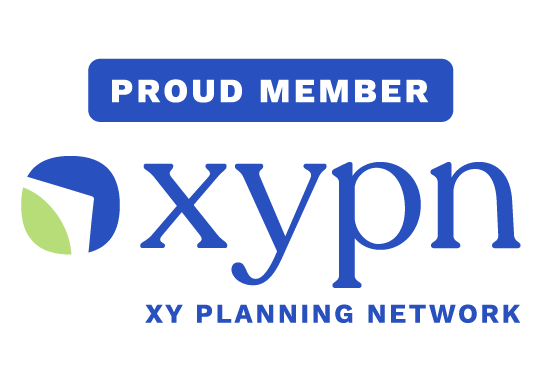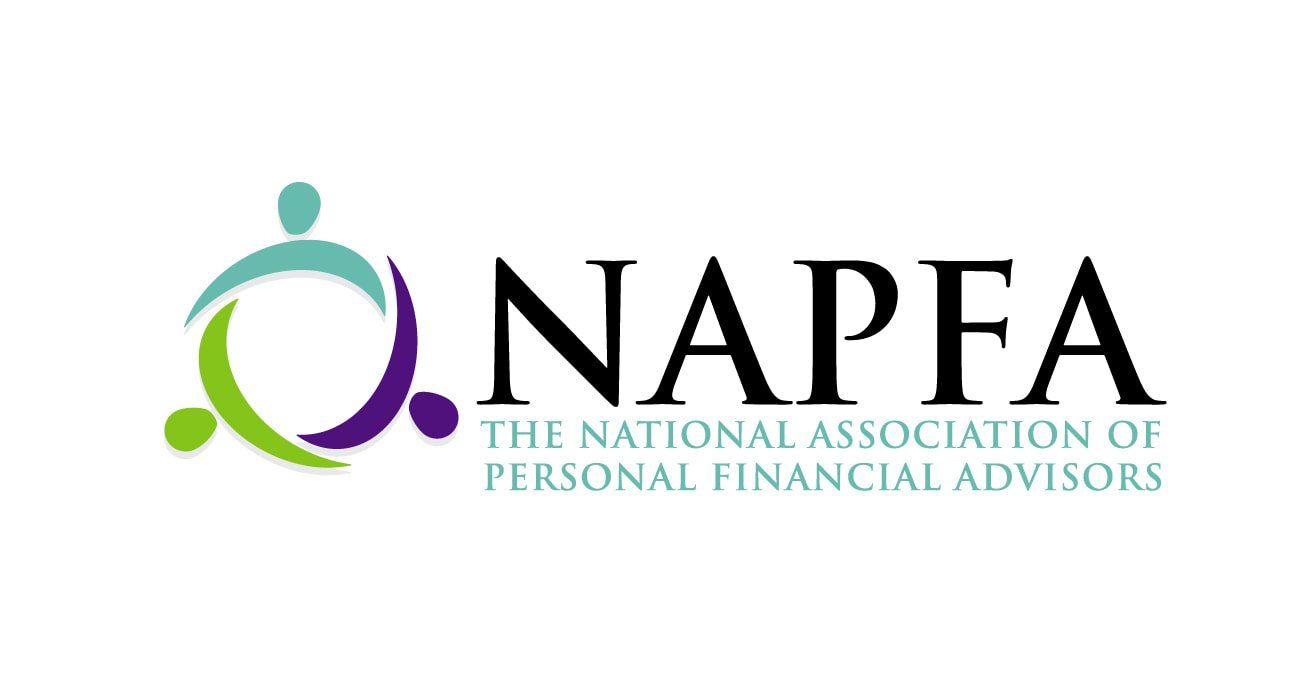
BLOG
Tips, News, and Know-How

10 Apr, 2024
You’ve been eyeballing the Roth IRA and like the idea of tax-free growth but there's a problem: your income exceeds the limit for contributing directly to a Roth IRA. Enter the ‘Backdoor’ Roth IRA strategy- a clever maneuver that allows high earners to enjoy the benefits of a Roth IRA without income limits. There are some important caveats so let’s dive into the strategy. Roth IRA Contribution Limits If you file taxes as a single person, your Modified Adjusted Gross Income (MAGI) must be under $153,000 for tax year 2023 and $161,000 for tax year 2024 to contribute to a Roth IRA, and if you're married and file jointly, your MAGI must be under $228,000 for tax year 2023 and $240,000 for tax year 2024. If your Modified Adjusted Gross Income is above these limits then you are ineligible for a direct Roth IRA contribution and might consider utilizing the backdoor Roth IRA strategy. Step by Step Guide to Executing the Backdoor Roth IRA Contribution Step 1: Open a traditional IRA at your custodian of choice. Ensure they are aware of, and allow for Backdoor Roth IRA conversions. Step 1.5: If you do not already have a Roth IRA, then also open a Roth IRA at the same custodian. Step 2: Make a NON-DEDUCTIBLE contribution to your traditional IRA for the tax year of your choice. Reminder- you have until the Tax Filing Deadline to make a prior year IRA contribution. The contribution limit for 2023 is $6,500 for individuals under 50 and $7,500 for individuals over 50. Important Notes: DO NOT MIX tax-deferred IRA assets with Non-Deductible IRA assets. If you have a rollover IRA or Traditional IRA with tax-deferred assets in them, at ANY custodian, then you must be aware of the pro-rata rule for the conversion amount. Step 3: Instruct the custodian to convert your contribution from the Non-Deductible IRA to your Roth IRA. Important Notes: If you are subject to the pro-rata rule, you WILL owe taxes on any converted amount that is pre-tax. Timing: it is advisable to convert the non-deductible contribution to the Roth IRA as soon as possible. Benefits of the Roth IRA Roth IRAs enjoy a lifetime of tax-free growth! Building up what I call the ‘triad’ of investment accounts- Taxable, Tax-Deferred and Tax-Free will provide you with the greatest flexibility once in retirement for distributions and tax management. No Required Minimum Distributions Unlike Traditional IRAs, Roth IRAs are not subject to Required Minimum Distributions over the original owners lifetime. This gives you the ability to let the assets grow and use only if needed. ·Estate Planning Benefits Even with SECURE ACT 2.0 changes, Roth IRAs are a fantastic estate planning tool. In Conclusion The backdoor Roth IRA. Strategy is another useful tool that allows high earners to continue saving in tax-free accounts. It is essential that you work with a financial professional to review the pro-rata rule as well as help determining the future legislative changes that may limit the future ability to perform backdoor Roth IRA contributions. When you need reliable financial planning for your small business in Cedar Park, TX, contact Momentum Private Wealth Management at 512-416-8085 today!

15 Mar, 2024
Retirement planning isn't just about saving money; it's about optimizing your financial strategies to ensure your hard-earned savings go the distance. One powerful tool often overlooked is the Roth conversion. By strategically converting traditional retirement account funds into Roth accounts before required minimum distributions (RMDs) kick in, retirees can potentially save a significant amount in taxes while enjoying greater flexibility and control over their retirement income. Understanding Roth Conversions Before diving into the strategy, let's understand what Roth conversions entail. A Roth conversion involves transferring funds from a traditional IRA or 401(k) to a Roth IRA. Unlike traditional retirement accounts, Roth IRAs offer tax-free growth and tax-free withdrawals in retirement, provided certain conditions are met. The Pre-RMD Window of Opportunity Once you reach the age of 72 (or 70½ if you reached that age before January 1, 2020), the IRS requires you to start taking RMDs from traditional retirement accounts. These distributions are taxed as ordinary income, potentially increasing your tax liability in retirement. However, before reaching this age, retirees have a window of opportunity to strategically convert funds to a Roth IRA. Benefits of Roth Conversions Before RMDs 1. Tax Diversification: Roth conversions allow retirees to diversify their tax liabilities. By having both traditional and Roth accounts, retirees gain flexibility in managing their tax burden in retirement. 2. Tax-Free Growth: Funds converted to a Roth IRA grow tax-free, providing a valuable hedge against future tax rate increases. This tax-free growth can significantly enhance retirement savings over time. 3. Reduced RMDs and Taxable Income: By converting funds to a Roth IRA before RMDs kick in, retirees can potentially reduce the size of their RMDs and, consequently, their taxable income in retirement. This can help minimize tax implications and preserve more of your retirement savings. 4. Estate Planning Benefits: Roth IRAs offer attractive estate planning advantages, as distributions to beneficiaries are tax-free. By converting traditional retirement account funds to Roth IRAs, retirees can leave a tax-free inheritance for their heirs. Implementing a Roth Conversion Strategy 1. Evaluate Tax Implications: Before executing a Roth conversion, it's crucial to assess the tax implications. Consider factors such as your current tax bracket, future income projections, and potential impact on Medicare premiums. 2. Convert Strategically: Rather than converting all funds at once, consider a gradual conversion strategy over several years. This allows you to manage tax liabilities more effectively and stay within lower tax brackets. 3. Utilize Low-Income Years: Take advantage of years when your income is lower, perhaps due to part-time work, early retirement, or other factors. Converting funds during these years can minimize the tax impact. 4. Consider Partial Conversions: You don't have to convert your entire traditional IRA balance at once. Opt for partial conversions that align with your tax planning goals and financial needs. 5. Consult a Financial Advisor: Roth conversions involve complex tax considerations and financial planning strategies. It's advisable to consult with a qualified financial advisor or tax professional to tailor a conversion plan that aligns with your specific circumstances. Conclusion Roth conversions offer retirees a powerful tool to optimize tax efficiency in retirement. By strategically converting funds from traditional retirement accounts to Roth IRAs before RMDs kick in, retirees can potentially save a significant amount in taxes while enjoying tax-free growth and greater flexibility in managing their retirement income. However, it's essential to approach Roth conversions with careful planning and consideration of individual financial goals and tax implications. With the right strategy in place, retirees can harness the benefits of Roth conversions to enhance their retirement savings and financial security. Get in touch with us today to embark on your journey towards financial empowerment and prosperity. We are here for you and your family for years to come. Visit our website or contact us at 512-416-8085 today!

16 Feb, 2024
Investment management is a key factor regardless of the fluctuations of economic times. Staying abreast of economic trends is paramount. Whether you're a seasoned investor or just dipping your toes into the market, understanding how economic shifts can impact your investments is crucial for long-term success. Here at Momentum Private Wealth Management, we recognize the significance of staying ahead of the curve. Let’s delve into the impact of economic trends on investment management, focusing specifically on what you need to know in Austin, Texas. The Intersection of Economic Trends and Investment Management Economic trends play a pivotal role in shaping investment strategies and decisions. From fluctuating interest rates to changes in consumer behavior, various factors can influence the performance of investment portfolios. As such, investors need to be proactive in analyzing economic indicators and adapting their investment approaches accordingly. In Austin, a thriving economic hub renowned for its vibrant tech scene and rapid growth, staying attuned to economic trends is particularly important. The city's dynamic ecosystem is subject to both local and global economic forces, making it imperative for investors to navigate these fluctuations strategically. Key Economic Trends Impacting Investment Management in Austin Tech Industry Dynamics: Austin's status as a burgeoning tech hub has propelled its economy to new heights. With the presence of major tech companies and a robust startup culture, the performance of the tech sector significantly influences investment opportunities in the region. Tracking trends such as technological innovations, funding rounds, and industry disruptions is essential for investors looking to capitalize on Austin's tech-driven growth. Real Estate Market: The real estate market in Austin has experienced remarkable growth in recent years, fueled by factors such as population influx, job opportunities, and favorable business conditions. However, rapid expansion also brings challenges such as housing affordability concerns and infrastructure strain. Investors must monitor real estate trends, including housing inventory levels, rental rates, and commercial developments, to make informed decisions about property investments. Economic Diversification: Austin's economy is characterized by its diversification across various industries, including technology, healthcare, manufacturing, and entertainment. This diversification enhances resilience and mitigates risks associated with sector-specific downturns. Investors can capitalize on this economic diversity by building well-balanced portfolios that encompass multiple sectors, thereby reducing exposure to volatility in any single industry. Interest Rate Fluctuations: Like the broader economy, interest rate fluctuations can significantly impact investment performance in Austin. Changes in interest rates affect borrowing costs, inflation expectations, and the attractiveness of certain asset classes. For instance, rising interest rates may lead to lower bond prices but could present opportunities for sectors such as financial services. Investors should closely monitor monetary policy decisions and economic indicators to gauge the direction of interest rates and adjust their portfolios accordingly. Strategies for Navigating Economic Trends in Austin Diversification: Building a diversified investment portfolio is a fundamental strategy for mitigating risk and maximizing returns, especially in a dynamic economic environment like Austin. By spreading investments across different asset classes, sectors, and geographical regions, investors can minimize the impact of localized economic downturns and capitalize on growth opportunities in diverse industries. Active Monitoring: Staying informed about economic trends requires continuous monitoring of relevant indicators and data points. Investors should leverage resources such as financial news outlets, economic reports, and industry analyses to stay ahead of market developments. Additionally, partnering with a reputable wealth management firm like Momentum Private Wealth Management provides access to expert insights and personalized guidance tailored to your financial goals. Long-Term Perspective: While short-term fluctuations may create volatility in the market, maintaining a long-term perspective is key to successful investment management. Instead of reacting impulsively to every economic trend, focus on your overarching investment objectives and stick to a disciplined strategy. By staying committed to your long-term financial plan, you can weather temporary market disruptions and position yourself for sustainable growth over time. Flexibility and Adaptability: Economic trends are inherently dynamic, requiring investors to remain flexible and adaptable in their approach. Be prepared to adjust your investment strategies in response to changing market conditions and emerging opportunities. A proactive stance towards portfolio rebalancing, asset allocation, and risk management can help you optimize your investment performance and navigate economic uncertainties effectively. When it comes to investment management, understanding the impact of economic trends is essential for making informed decisions and working towards achieving financial success. In Austin, a thriving economic hub characterized by innovation and growth, staying attuned to local and global economic dynamics is particularly crucial. By leveraging strategies such as diversification, active monitoring, long-term perspective, and flexibility, investors can navigate economic trends with confidence and position themselves for prosperity in the dynamic landscape of Austin's economy. At Momentum Private Wealth Management, we're committed to helping our clients navigate these challenges and capitalize on investment opportunities tailored to their unique financial goals. Get in touch with us today to embark on your journey towards financial empowerment and prosperity. We are here for you and your family for years to come. Visit our website or contact us at 512-416-8085 today!

22 Nov, 2023
Are you worried you won't have enough money for retirement? Investment management can help determine how much you need and the best approach to save enough money. Keep reading to discover how to maximize your nest egg. How Much To Save The first step to maximizing your nest egg includes knowing how much you should save. Decide what you want your retirement to look like and make a list of things you want to do and how you want to live. Then, do your best to estimate what things will cost once you retire, considering an average inflation rate of 3.22%. Once you know your projected expenses, determine any sources of income you'll have, including investments, pension funds, and social security. The difference between your expenses and your income is how much you should save. Generally speaking, some experts have suggested that you may need as much as $2 million to live a 'comfortable retirement,' those these numbers can vary wildly depending on your spending habits. Financial professionals may also recommend you spend around 70-85% of your current income per year once you are retired. Tips for Saving Enough Money Whether your goal is $2 million or more, saving enough money can feel overwhelming. However, with the following tips, you can maximize your savings potential. Set an Age Goal Determine what age you think you'll be able to retire. While working longer allows you more time to save, it also reduces the amount of time you have to enjoy retirement. Conversely, if you retire too early, you'll depend on your savings for a while before you can draw from social security, which means you'll need to save even more money. The average age of retirement is between the ages of 65 and 66 which is around the age at which the Social Security Administration assumes retirement. This gives you significant time to save, avoids drawing from your savings too quickly, and still gives the average person over a decade to enjoy retirement. Pay Off Your Debts While not always possible, prioritize paying off your debts before you retire. If you continue to pay off your debts after retirement, focus on the high-interest ones first, which often include credit cards, personal loans, and car payments. Also, prioritize student loan payments. If you still have student loan debt in retirement, the government can garnish up to 15% of your social security payments if you fall behind. Maximize Contributions Good investment management guidelines suggest you maximize your contributions to your retirement accounts. If you're traditionally employed, your workplace probably offers some form of tax-advantaged retirement account. IRAs and 401(k)s remain two of the best methods for saving for retirement. While contributing the maximum allowable amount gives you less money to live off short term, it sets you up for success after retirement. The maximum you can contribute changes each year based on inflation rates and other economic factors, but in 2023, the IRS allowed a maximum contribution of $22,500, and for those savers who are 50 or older may contribute up to $30,000 depending on the plan. This is called the 'catch-up provision.' But contributing to these accounts doesn't just have long-term benefits. When you contribute to your 401k or IRA, you may be eligible to deduct the amount from your total taxable income, meaning you'll lower your taxable income for that year. Use Employer Match As part of their benefits, many employers match your 401(k) contributions up to a certain percentage of your total paycheck. The average employee match equals just under 5%. This means if you make $2,000 every paycheck and opt to automatically deposit 5% of it, you'll contribute a total of $200 toward your retirement: $100 from you and $100 from your employer ($2,000 x 0.05 x 2). Keep in mind your employer won't match the maximum if you don't contribute that much. For example, if your employer offers a 5% match, but you only contribute 3% of your total paycheck, you'll receive a 3% match instead of the 5% match. While that extra 2% gives you less paycheck to live off, you have to think long-term and realize how much money you'll miss out on for retirement. If you make $2,000 every paycheck, that extra 2% equals $80 a month. Throughout a 40-year career, that's $38,400 from your employer you've missed out on ($80 x 12 months x 40 years = $38,000) plus the potential growth! Remember, employer matches are a guaranteed 100% return on your money.. Consider how good investing could multiply that money. Diversify the Investments Whether you invest in your retirement accounts or other investments, diversity is one of the first rules of good asset management. This means instead of putting all your money into one asset class, consider investing in a well diversified portfolio which may include different countries and sectors of the investable market. Financial experts consider a diversified portfolio a more impactful investment strategy as the goal would be to lower your overall risk for the level of return. Certain asset classes do not provide an equally higher level of return for the risk. Regularly Review and Adjust One key way to maximize your nest egg requires regularly reviewing your investments, assessing their performance, and adjusting as needed. If one area of your portfolio underperforms,determine whether or not you need to redeploy those assets into another area of the portfolio. Don't consider investments something you fund and then forget about. While you'll still likely grow your nest egg, you won't maximize it without purposeful attention. You can also vary your risk as you near retirement, and many people prefer to invest aggressively when they're young and take a less aggressive approach as they near retirement. Minimize Fees Many investments have underlying fees- called expense ratios. Depending on whether or not the investment is actively managed by the management company, these fees can often near or exceed 1% depending on the fund. Large underlying expense ratios can erode returns over a long period of time so be sure you are invested in a manner that suits your needs and if you are paying large expense ratios, the fund is producing excess returns to demand that fee. Keep Learning While your financial manager can handle most of your investments, stay informed by reading a financial journal or other reputable sources. This can help you understand your investment portfolio and help drive the conversation with your advisor about the risk you are willing to take vis a vis your goals. Contact Your Wealth Management Experts for Help At Momentum Private Wealth Management, we take our duty of investment management seriously. We take time to learn your goals and help you build wealth while navigating a volatile market. To learn more about our investment management services or to speak with a wealth management specialist, call 512-416-8085 today.

15 Sep, 2023
The right financial planning helps young families save for retirement and pay for future expenditures in the later stages of life. It also helps responsible parents or guardians manage the money the family relies on, ensuring there’s enough to cover important expenses or emergency costs.

21 Jul, 2023
Engaging with the stock market often brings a combination of anxiety and excitement to new investors. There are several factors to consider when navigating the seemingly endless list of public companies with stocks for people to purchase for trading or investing, and it can quickly become overwhelming.
Our office serves the entire Austin Texas area, including:
Austin, Cedar Park, Georgetown, Leander, and Round Rock.
© 2024
All Rights Reserved | Momentum Private Wealth Management
Website by EGS Marketing Solutions







